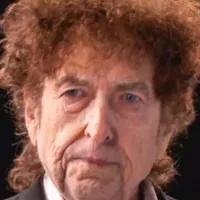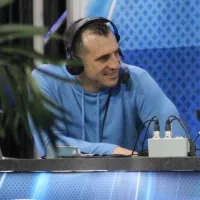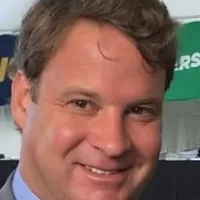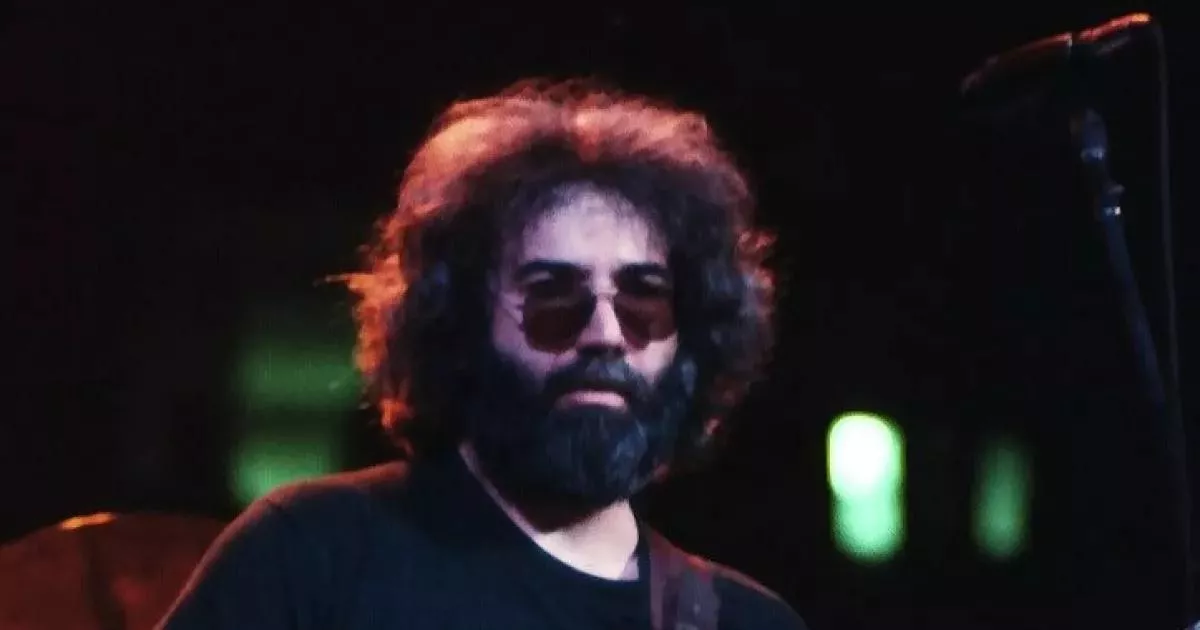Jerry Garcia was an American musician, best known as the lead guitarist and vocalist for the Grateful Dead, a band he co-founded and that became a symbol of the 1960s counterculture. Though he resisted the title, Garcia was widely regarded as the band's leader. He was inducted into the Rock and Roll Hall of Fame in 1994 as a member of the Grateful Dead, solidifying his legacy as a pivotal figure in rock music history.
1919: Garcia family immigrated from Spain
In 1919, Jerry Garcia's father's extended family immigrated from Spain.
1937: Birth of Jerry Garcia's brother, Clifford Ramon
In 1937, Clifford Ramon "Tiff" Garcia, Jerry Garcia's older brother, was born. Shortly before Clifford's birth, their father and a partner leased a building in downtown San Francisco and turned it into a bar, partly in response to Jose being blackballed from a musicians' union for moonlighting.
August 1, 1942: Jerome John Garcia's birth
On August 1, 1942, Jerome John Garcia was born. He later became known as Jerry Garcia, the lead guitarist and vocalist for the Grateful Dead.
1946: Garcia's Finger Accident
In 1946, Jerry Garcia, at the age of four, had two-thirds of his right middle finger cut off in a wood splitting accident involving his brother.
1953: Garcia's Family Moved to Menlo Park
In 1953, Jerry Garcia's family moved to Menlo Park. That year, Garcia was also introduced to rock and roll and rhythm and blues by his brother, and enjoyed listening to Ray Charles, John Lee Hooker, B. B. King, Hank Ballard, and, later, Chuck Berry.
1955: Acquisition of 1955 Stratocaster
In May of 1971, Jerry Garcia began using a 1955 natural finish Stratocaster that had been given to him by Graham Nash in 1969.
1957: Garcia Introduced to Marijuana and Studies at San Francisco Art Institute
In mid-1957, Jerry Garcia began smoking cigarettes and was introduced to marijuana. During this time, Garcia also studied at what is now the San Francisco Art Institute. Hedrick also introduced Garcia to the fiction of Jack Kerouac, whom Garcia later cited as a major influence.
1958: Garcia attended Balboa High School
In 1958, Jerry Garcia attended tenth grade at Balboa High School, where he often got into trouble for skipping classes and fighting.
1959: Garcia's Family Moved to Cazadero
In 1959, Jerry Garcia's mother moved the family to Cazadero, a small town in Sonoma County. Garcia did, however, join a band at his school known as the Chords.
December 14, 1960: Garcia Given General Discharge from the U.S. Army
On December 14, 1960, Jerry Garcia was given a general discharge from the U.S. Army due to accruing many counts of being AWOL.
January 1961: Garcia Drove to East Palo Alto to See Laird Grant
In January 1961, Jerry Garcia drove to East Palo Alto to see Laird Grant, an old friend from middle school. He had purchased a 1950 Cadillac sedan from a cook in the army, which barely made it to Grant's residence before it broke down.
February 20, 1961: Garcia's Car Accident
On February 20, 1961, Jerry Garcia was involved in a car accident in which the driver encountered a curve and, speeding around 90 miles per hour (140 km/h), crashed into the guard rail, sending the car rolling turbulently. Garcia was hurled through the windshield of the car into a nearby field. Speegle, still in the car, was fatally injured.
April 1961: Garcia Met Robert Hunter
In April 1961, Jerry Garcia first met Robert Hunter, who would become a long-time friend of and lyricist for the Grateful Dead. Garcia performed his first concert with Hunter, each earning five dollars.
1962: Garcia Sang and Performed Bluegrass, Old-Time, and Folk Music
Between 1962 and 1964, Jerry Garcia sang and performed mainly bluegrass, old-time, and folk music.
1962: Garcia Met Phil Lesh and Recorded KPFA Special
In 1962, Jerry Garcia met Phil Lesh, the eventual bassist of the Grateful Dead. They recorded "Matty Groves" and "The Long Black Veil", among several other tunes. The recordings became a central feature of a 90-minute KPFA special broadcast, "The Long Black Veil and Other Ballads: An Evening with Jerry Garcia".
April 23, 1963: Marriage to Sara Ruppenthal
On April 23, 1963, Jerry Garcia married Sara Ruppenthal.
1963: Garcia Teaches Bob Matthews and Meets Bob Weir
In 1963, Bob Matthews introduced Bob Weir and Jerry Garcia on New Year's Eve. One of Garcia's students was Bob Matthews, who later engineered many of the Grateful Dead's albums.
1964: Garcia's First Use of LSD
Jerry Garcia first began using LSD in 1964; later, when asked how it changed his life, he remarked: "Well, it changed everything [...] the effect was that it freed me because I suddenly realized that my little attempt at having a straight life and doing that was really a fiction and just wasn't going to work out. Luckily I wasn't far enough into it for it to be shattering or anything; it was like a realization that just made me feel immensely relieved."
1965: Start of Grateful Dead's Constant Touring
From their formation in 1965, Jerry Garcia and the Grateful Dead toured almost constantly.
1965: Start of Garcia's 30-year career with Grateful Dead
In 1965, Jerry Garcia began his 30-year career with the Grateful Dead, a band he co-founded.
1965: Mother McCree's Uptown Jug Champions Evolved into the Warlocks and then Grateful Dead
In 1965, Mother McCree's Uptown Jug Champions evolved into the Warlocks, with the addition of Dana Morgan, Jr. (soon replaced by Phil Lesh) on bass guitar and Bill Kreutzmann on percussion. However, the band discovered a record by another group (possibly the future Velvet Underground or Z.Z. Top, both of which used the name in their early days) called The Warlocks. In response, Garcia came up with "Grateful Dead" by opening a Funk & Wagnalls dictionary to an entry for "Grateful dead".
1965: Use of Guild Starfire
In 1965, while playing with the Warlocks, Jerry Garcia used a Guild Starfire guitar, which he also used on the debut album of the Grateful Dead.
1966: Carolyn Adams had a daughter with Ken Kesey.
In 1966, Carolyn Adams, also known as "Mountain Girl," had a daughter, Sunshine, with Ken Kesey.
October 2, 1967: 710 Ashbury Street Raided
On October 2, 1967, 710 Ashbury Street in San Francisco, where the Grateful Dead resided, was raided on marijuana charges.
1967: Use of Gibson Les Paul Guitars
Beginning in late 1967, Jerry Garcia played black or gold mid-1950s Gibson Les Paul guitars with P-90 pickups.
1967: Divorce from Sara Ruppenthal
In 1967, Jerry Garcia and Sara Ruppenthal divorced.
1967: Garcia as 'spiritual advisor' for Jefferson Airplane's Surrealistic Pillow
In mid-1967, Jerry Garcia was listed as the "spiritual advisor" for Jefferson Airplane's album, Surrealistic Pillow. Garcia played the high lead on "Today," and also played on "Plastic Fantastic Lover" and "Comin' Back to Me" on that album.
1968: Use of Gibson Les Paul Guitars
Jerry Garcia continued to play black or gold mid-1950s Gibson Les Paul guitars with P-90 pickups in 1968.
1969: Start of Pedal Steel Flirtation
Around 1969, Jerry Garcia began his "pedal steel flirtation period," initially playing a Fender instrument.
1969: Gift of Stratocaster from Graham Nash
In 1969, Graham Nash gifted a 1955 natural finish Stratocaster to Jerry Garcia, which he would begin using in 1971.
1969: Joined New Riders of the Purple Sage
In 1969, Jerry Garcia began playing pedal steel guitar for fellow-San Francisco musicians New Riders of the Purple Sage from their initial dates.
1969: Adoption of Gibson SG and Fender Stratocaster
In 1969, Jerry Garcia picked up the Gibson SG and used it for most of the year and 1970, except for a short period where he used a sunburst Fender Stratocaster.
1969: Pedal Steel on Jefferson Airplane's Volunteers
In 1969, Jerry Garcia played pedal steel on the track "The Farm" on the Jefferson Airplane album 'Volunteers', and the track "Oh Mommy" by Brewer and Shipley.
January 1970: Grateful Dead Arrested in New Orleans
In January 1970, most of the Grateful Dead band was arrested in New Orleans on drug charges, except for Garcia, Tom Constanten, and Ron "Pigpen" McKernan.
February 2, 1970: Birth of daughter Annabelle Walker Garcia
On February 2, 1970, Carolyn Adams gave birth to Jerry Garcia's second daughter, Annabelle Walker Garcia.
August 1970: Mother's Car accident
In August 1970, Jerry Garcia's mother, Ruth, was involved in a car crash near Twin Peaks in San Francisco.
September 28, 1970: Death of his mother, Ruth
On September 28, 1970, Jerry Garcia's mother, Ruth, died following a car accident in August of the same year.
1970: Contributed to Brewer & Shipley's album Tarkio
In 1970, Jerry Garcia contributed pedal steel guitar to Brewer & Shipley's album Tarkio.
1970: Participation in the Zabriskie Point soundtrack
In 1970, Jerry Garcia participated in the soundtrack for the film Zabriskie Point.
1970: Pedal Steel on Crosby, Stills, Nash & Young's Déjà Vu
In 1970, Jerry Garcia played pedal steel on the hit single "Teach Your Children" by Crosby, Stills, Nash & Young from their album 'Déjà Vu'.
1970: Use of Gibson SG
In 1970, Jerry Garcia primarily used the Gibson SG, except for a small period where he used a sunburst Fender Stratocaster.
April 1971: Appearance at Fillmore East with Emmons D-10
In April 1971, Jerry Garcia employed an Emmons D-10 at the Grateful Dead's and New Riders of the Purple Sage's final appearances at the Fillmore East.
April 1971: Playing the Peanut guitar
In March and April 1971, Jerry Garcia played the "Peanut" guitar during the recording of the Grateful Dead's second live album, Grateful Dead.
1972: Purchase of Alembic Guitar
In late 1972, Jerry Garcia purchased the first guitar made by Alembic luthier Doug Irwin for $850.
1972: Brief Reversion to Sunburst Stratocaster
In the summer of 1972, while Alligator was in the shop, Jerry Garcia briefly reverted to the sunburst Stratocaster. This can be seen in Sunshine Daydream.
1972: End of Pedal Steel Flirtation
Jerry Garcia's "pedal steel flirtation period" ended around 1972.
March 1973: Met Deborah Koons
In March 1973, Jerry Garcia met Deborah Koons at Long Island's Nassau Coliseum.
May 1973: Delivery of Wolf Guitar
In May 1973, Jerry Garcia received the "Wolf" guitar from Doug Irwin, replacing Alligator on stage in September.
August 1973: End of Alligator Use
The "Alligator", a Stratocaster with an alligator sticker added in the fall of 1971, remained Jerry Garcia's principal electric guitar until August 1973.
1973: Use of McIntosh MC 2300 Amplifier
In 1973, Jerry Garcia began using a specific McIntosh MC 2300 amplifier.
September 21, 1974: Birth of daughter Theresa Adams "Trixie" Garcia
On September 21, 1974, Carolyn Adams gave birth to Jerry Garcia's third daughter, Theresa Adams "Trixie" Garcia.
1974: Wolf Dropped During European Tour
During the Grateful Dead's 1974 European tour, the "Wolf" guitar was dropped on several occasions, causing a minor crack in the headstock.
1974: Produced Home, Home on the Road for New Riders of the Purple Sage
In 1974, Jerry Garcia produced the live album Home, Home on the Road by New Riders of the Purple Sage.
1974: Budweiser Budman Sticker on Amplifier
In 1974, Jerry Garcia's McIntosh MC 2300 amplifier was christened with a Budweiser Budman sticker, making it a unique identifier.
1974: Introduction to smokeable heroin
In 1974, during the Grateful Dead's European tour, Jerry Garcia was introduced to a smokeable form of heroin in a brothel.
1974: Began relationship with Deborah Koons
In mid-1974, Jerry Garcia began his relationship with Deborah Koons.
1975: Discovery of "Persian Base"
During the Grateful Dead's 1975 hiatus, Jerry Garcia was introduced to "Persian" or "Persian Base", a smokeable drug initially advertised as refined opium. Garcia's discovery of this drug occurred amidst the stress of creating 'The Grateful Dead Movie'.
1975: Playing Travis Bean Guitars
In 1975, Jerry Garcia played several Travis Bean guitars, including the TB1000A.
1975: Garcia leaves Adams for Koons
In late 1975, Jerry Garcia left Carolyn Adams for Deborah Koons.
1976: Playing Travis Bean Guitars
From 1976 to 1977, Jerry Garcia played several Travis Bean guitars, including the TB500.
September 28, 1977: Return of Refurbished Wolf Guitar
On September 28, 1977, Irwin delivered the refurbished "Wolf" guitar back to Jerry Garcia. The wolf sticker was now inlaid into the instrument and featured an effects loop.
1977: Brief reconciliation with Carolyn Adams
In 1977, Jerry Garcia's relationship with Deborah Koons ended, leading to a brief reconciliation with Carolyn Adams.
1978: Deterioration of Band Chemistry
By 1978, the Grateful Dead's chemistry began "cracking and crumbling" due to drug and alcohol abuse, leading to poor group cohesion.
1978: Befriended Manasha Matheson
During the autumn of 1978, Jerry Garcia developed a friendship with Shimer College student Manasha Matheson.
1978: Adams moves to Eugene, Oregon
In 1978, Carolyn Adams moved with the children to the Eugene, Oregon area due to disagreements with Garcia's drug use.
February 1979: Departure of Keith and Donna Jean Godchaux
In February 1979, Keith and Donna Jean Godchaux left the Grateful Dead because the band's chemistry had begun to deteriorate.
August 4, 1979: First concert use of "Tiger" guitar
On August 4, 1979, Jerry Garcia first played his custom guitar "Tiger" in concert with the Grateful Dead at the Oakland Auditorium Arena. The guitar was named for the tiger inlay on the preamp cover.
1980: Affair with Amy Moore begins
Circa 1980, Jerry Garcia began an affair with Amy Moore.
1981: Affair with Amy Moore ends
Circa 1981, Jerry Garcia's affair with Amy Moore ended. The affair inspired the Garcia-Hunter song "Run for the Roses."
December 31, 1981: Marriage to Carolyn Adams
On December 31, 1981, Jerry Garcia and Carolyn Adams were married.
1983: Decline in Onstage Demeanor
By 1983, Jerry Garcia's onstage demeanor had begun to change, marked by inconsistent performances and signs of disengagement. Years of heavy smoking had also affected his voice.
1984: Physical Decline During Performances
By 1984, Jerry Garcia would often rest his chin on the microphone during performances, indicating a continued physical decline as a result of financial risks, drug use, and poor business decisions.
1984: Dismissal of Rock Scully
In 1984, Rock Scully was dismissed by the Grateful Dead for enabling Garcia's addictions and embezzling the Garcia Band's profits.
January 1985: Intervention and Arrest for Drug Possession
In January 1985, Jerry Garcia's bandmates held an intervention due to his decade-long heroin addiction. On January 19, 1985, before starting a rehabilitation program, Garcia was arrested for drug possession in Golden Gate Park.
1985: Asteroid discovery
In 1985, Tom Gehrels discovered an asteroid but never named it. The astronomer later offered it to Simon Radford and Ed Olszewski, who named it after Jerry Garcia in November 1995.
July 1986: Diabetic Coma
In July 1986, Jerry Garcia collapsed into a diabetic coma due to unhealthy weight, dehydration, bad eating habits, and a recent relapse. He woke up five days later and had to relearn how to play the guitar, as well as other basic skills.
1986: Diabetic Coma throwback
After returning from the band's 1992 summer tour, Garcia became sick, a throwback to his diabetic coma in 1986.
1986: Achieving Abstinence
By the spring of 1986, Jerry Garcia had achieved complete abstinence from drugs with the assistance of Nora Sage.
1986: Garcia's Diabetic Coma
In 1986, Jerry Garcia went into a diabetic coma and nearly died. He continued to struggle with health issues later in life.
December 20, 1987: Birth of daughter Keelin Noel Garcia
On December 20, 1987, Manasha Matheson gave birth to Jerry Garcia's daughter, Keelin Noel Garcia.
1987: Return to pedal steel guitar with Bob Dylan
After a long lapse from playing the pedal steel, Jerry Garcia played it once more during several of the Dead's concerts with Bob Dylan in the summer of 1987.
1987: Ben & Jerry's Cherry Garcia ice cream
In 1987, Ben & Jerry's introduced their Cherry Garcia ice cream flavor dedicated to Jerry Garcia. It was the first ice cream flavor dedicated to a musician.
1987: Release of 'In the Dark' and Band Revival
In 1987, after Jerry Garcia's recovery, the Grateful Dead released 'In the Dark', which became their best-selling studio album. The band's energy and chemistry reached a new peak due to Garcia's improved health.
1988: Appearance on Ornette Coleman's album Virgin Beauty
In 1988, Jerry Garcia appeared on saxophonist Ornette Coleman's album, "Virgin Beauty".
1988: Performance at the "Soviet American Peace Walk" concert
In 1988, Jerry Garcia performed at several major benefits, including the "Soviet American Peace Walk" concert in San Francisco, drawing 25,000 people. He also played at a benefit for Vietnam Veteran Brian Willson.
1989: Representation by the Weir Gallery
From 1989 Jerry Garcia's artistic endeavors were represented by the Weir Gallery in Berkeley, California.
July 1990: Brent Mydland's Death
In July 1990, Brent Mydland died of a speedball overdose, deeply affecting Jerry Garcia, who believed the band's chemistry would never be the same.
August 17, 1990: Marriage to Manasha Matheson
On August 17, 1990, Jerry Garcia and Manasha Matheson married at their San Anselmo, California home in a spiritual ceremony.
1990: Irwin completes "Rosebud"
In 1990, Doug Irwin completed "Rosebud", Jerry Garcia's fourth custom guitar, featuring different inlays and electronics from "Tiger". Rosebud had three humbuckers, a Roland GK-2 pickup, and was used with a Roland GR-50 rack mount synthesizer and a Korg M1R synthesizer during live performances.
1990: First solo art show
In 1990, Roberta Weir sponsored Jerry Garcia's first solo art show at the Weir Gallery in Berkeley, California.
1991: Expressed delight in being a father
In 1991, Jerry Garcia expressed his delight in finding the time to "actually be a father" to Keelin.
1991: Concerns About Band's Future and Relapse
In 1991, Jerry Garcia was concerned with the Grateful Dead's future due to exhaustion from touring. He relapsed into heroin use, prompting another intervention from the band.
1991: Rolling Stone interview
In a 1991 Rolling Stone interview, Jerry Garcia stated that "we haven't really lived together since the Seventies" in reference to his wife Carolyn Adams.
1992: Recovery and Lifestyle Changes
In 1992, Manasha Garcia helped Jerry Garcia recover from an illness, organizing a team of health professionals. Garcia reduced smoking, started losing weight, and became a vegetarian.
January 1993: Re-entered by Brigid Meier
In January 1993, Barbara "Brigid" Meier, a former girlfriend from the early 1960s, reentered Jerry Garcia's life for a brief period.
1993: Replacement of Budman Amplifier
In 1993, Jerry Garcia's "Budman" amp, which was one of the only components from the Wall of Sound to remain in use, was replaced with a cab simulation system.
1993: Cripe gifts "Lightning Bolt" guitar
In 1993, Stephen Cripe gifted Jerry Garcia the "Lightning Bolt" guitar, named for its inlay. Garcia began using the guitar exclusively and hired Gary Brawer to reconfigure the pickups and make it MIDI-compatible.
1993: Garcia Interview with Rolling Stone
In a 1993 interview with Rolling Stone, Jerry Garcia noted that his own preferences are for improvisation, for making it up as he goes along.
1993: Renewed acquaintance with Deborah Koons
In the spring of 1993, Jerry Garcia renewed his acquaintance with Deborah Koons.
1993: Decline of Physical and Mental Condition
Throughout 1993, Jerry Garcia's physical and mental condition continued to decline.
February 14, 1994: Marriage to Deborah Koons
On February 14, 1994, Jerry Garcia married Deborah Koons in Sausalito, California.
1994: Divorce from Carolyn Adams
In 1994, Jerry Garcia and Carolyn Adams divorced.
1994: Induction into the Rock and Roll Hall of Fame
In 1994, Jerry Garcia was inducted into the Rock and Roll Hall of Fame as a member of the Grateful Dead.
1994: Decline of Physical and Mental Condition
In 1994, Jerry Garcia's physical and mental condition continued to decline.
April 1995: Cripe delivers "Top Hat" guitar
In April 1995, Stephen Cripe delivered the backup guitar "Top Hat" to Jerry Garcia, who bought it for $6,500. However, Garcia rarely used it, preferring the "Lightning Bolt" guitar.
July 1995: Checking into Betty Ford Center and Death
In July 1995, Jerry Garcia checked into the Betty Ford Center for a limited stay. Motivated by this, he then checked into the Serenity Knolls treatment center, where he ultimately died.
August 9, 1995: Jerry Garcia's Death
On August 9, 1995, Jerry Garcia died. He was the lead guitarist and vocalist for the Grateful Dead.
August 1995: Garcia's Death in Drug Rehabilitation Facility
In August 1995, Jerry Garcia died of a heart attack in a California drug rehabilitation facility.
November 1995: Asteroid named after Garcia
In November 1995, astronomers Simon Radford and Ed Olszewski named an asteroid that orbits between Mars and Jupiter after Jerry Garcia. Tom Gehrels, who had originally discovered the asteroid in 1985 but never named it, offered it to them for the occasion.
1995: Koons, Meier, and Ruppenthal Claim
At Jerry Garcia's 1995 funeral, Deborah Koons declared that she was "the love of his life" while paying her final respects, whereupon Meier and Ruppenthal, who were both in attendance, simultaneously exclaimed, "He said that to me!"
1995: Last studio collaboration on Sanjay Mishra's Blue Incantation
In 1995, Jerry Garcia played on three tracks for the CD Blue Incantation by guitarist Sanjay Mishra, marking his last studio collaboration.
1995: End of Garcia's 30-year career with Grateful Dead
In 1995, Jerry Garcia's 30-year career with the Grateful Dead came to an end.
1995: End of Grateful Dead's Constant Touring
Jerry Garcia and the band toured almost constantly from their formation in 1965 until Garcia's death in 1995.
April 4, 1996: Spreading of Ashes in India
On the morning of April 4, 1996, Bob Weir and Deborah Koons spread half of Jerry Garcia's ashes into the Ganges at Rishikesh, India, a site sacred to Hindus.
1996: End of representation by the Weir Gallery
In 1996, Jerry Garcia's artistic endeavors ended their representation by the Weir Gallery in Berkeley, California.
1998: Doug Irwin traffic accident
In 1998, Doug Irwin was left destitute from a traffic accident.
1998: Roach species named after Garcia
In 1998, a newly discovered species of roach was named Cryptocercus garciai after Jerry Garcia.
2000: God, the Devil and Bob sitcom airs
In 2000, NBC broadcast the animated sitcom, God, the Devil and Bob, which featured a "God" character based on Jerry Garcia's appearance. The series was cancelled after four episodes due to backlash and low ratings.
May 8, 2002: Auction of Wolf and Tiger guitars
On May 8, 2002, Jerry Garcia's guitars, Wolf and Tiger, were auctioned at Studio 54 in New York City. Tiger sold for $957,500, and Wolf for $789,500, setting a world record for the pair at $1.74 million. Tiger went to Jim Irsay and Wolf went to Daniel Pritzker.
2003: Garcia ranked 13th in Rolling Stone's "100 Greatest Guitarists of All Time"
In 2003, Jerry Garcia was ranked 13th in Rolling Stone's "100 Greatest Guitarists of All Time" cover story, highlighting his distinctive guitar playing.
2003: Rolling Stone's 100 Greatest Guitarists list
In 2003, Rolling Stone ranked Jerry Garcia 13th in its list of the 100 Greatest Guitarists of All Time.
July 30, 2004: The Grateful Garcia Gathering
On July 30, 2004, Melvin Seals headlined "The Grateful Garcia Gathering", an outdoor music and camping festival. He was the first Jerry Garcia Band (JGB) member to do so.
July 21, 2005: "Jerry Garcia Amphitheater" named
On July 21, 2005, the San Francisco Recreation and Park Commission passed a resolution to name the amphitheater in McLaren Park the "Jerry Garcia Amphitheater".
August 7, 2005: First show at Jerry Garcia Amphitheater
On August 7, 2005, the first show at the Jerry Garcia Amphitheater was Jerry Day 2005. Jerry's brother, Tiff Garcia, welcomed everyone to the new amphitheater.
September 24, 2005: Tribute concert in Berkeley
On September 24, 2005, the Comes a Time: A Celebration of the Music & Spirit of Jerry Garcia tribute concert was held at the Hearst Greek Theatre in Berkeley, California, featuring Bob Weir, Bill Kreutzmann, Mickey Hart, Bruce Hornsby, and Trey Anastasio, among others.
October 29, 2005: Dedication ceremony for Jerry Garcia Amphitheater
On October 29, 2005, the dedication ceremony (Jerry Day 2) for the Jerry Garcia Amphitheater was officiated by mayor Gavin Newsom.
2007: David Kemper joins Melvin Seals and JGB
In 2007, Jerry Garcia Band drummer David Kemper joined Melvin Seals and JGB.
July 26, 2008: NPR interview with Lee Johnson
On July 26, 2008, Lee Johnson was interviewed on NPR about his orchestral tribute to the music of the Grateful Dead, "Dead Symphony: Lee Johnson Symphony No. 6," and gave credit to Garcia's songwriting.
2010: Jerry Garcia Glen opens
In 2010, the Santa Barbara Bowl in California opened Jerry Garcia Glen, including a statue of Garcia's right hand, along the walk up to the venue.
May 14, 2015: "Dear Jerry" tribute concert
On May 14, 2015, an all-star lineup held a tribute concert for Jerry Garcia at Merriweather Post Pavilion in Columbia, Maryland. The event was called "Dear Jerry".
2015: Hunter and Garcia inducted into Songwriters Hall of Fame
In 2015, Hunter and Jerry Garcia were inducted into the Songwriters Hall of Fame. Hunter accepted the award along with Garcia's daughter, Trixie Garcia, who accepted on behalf of her father.
2015: The Jerry Garcia Foundation launched
In 2015, Jerry Garcia's wife, Manasha Garcia, and their daughter, Keelin Garcia, launched The Jerry Garcia Foundation, a nonprofit charity that supports projects for artistic, environmental, and humanitarian causes.
2015: Garcia ranked #46 in Rolling Stone's list of 100 Greatest Guitarists
In the 2015 version of the list, Jerry Garcia was ranked #46 in Rolling Stone's list of 100 Greatest Guitarists.
May 2017: Auction of Wolf guitar for charity
In May 2017, the Wolf guitar was auctioned again, this time for charity. Daniel Pritzker donated all proceeds to the Southern Poverty Law Center. Brian Halligan placed the winning bid totaling $1.9 million.
2017: Red Roses, Green Gold musical
In 2017, Jerry Garcia's music was featured in Red Roses, Green Gold, an off-Broadway musical featuring the music of Garcia and Robert Hunter, with additional music by Phil Lesh, Bob Weir, Mickey Hart, and Hunter's longtime collaborator Greg Anton.
2018: Jerry Garcia Music Arts label launched
In 2018, Jerry Garcia's family members, Keelin Garcia and Manasha Garcia launched the Jerry Garcia Music Arts independent music label.
June 23, 2019: John Mayer plays Wolf at Citi Field
On June 23, 2019, John Mayer played Jerry Garcia's "Wolf" guitar with Dead & Company at Citi Field.
October 2021: Auction of Garcia's Stage Rack and Budman Amp
On 14 October 2021, Jerry Garcia's last stage rack containing a MC2300 sold for $226,800 USD. The MC2300 Budman sold for $378,000 USD during a Sotheby's auction.
November 18, 2021: Forthcoming Grateful Dead biopic announced
On November 18, 2021, it was announced that Jonah Hill would portray Jerry Garcia in a forthcoming Grateful Dead biopic directed by Martin Scorsese for Apple TV+.
2023: Garcia ranked 34th by Rolling Stone
In 2023, Jerry Garcia was ranked 34th by Rolling Stone.
2024: Equivalent cost of "Rosebud" guitar
In 1990, the final cost of the "Rosebud" guitar was $11,000, equivalent to $26,500 in 2024.
Mentioned in this timeline

Gavin Newsom is an American politician and businessman currently serving...

Bob Dylan is a highly influential American singer-songwriter renowned as...
California is a U S state on the Pacific Coast...
Apple TV is a digital media player and microconsole by...

Ice cream is a frozen dessert primarily composed of milk...
India officially the Republic of India is a South Asian...
Trending

29 minutes ago Kim Kardashian confronts Kanye West's claim about faking the 2016 Paris robbery.

1 hour ago Housing Crisis: Americans Face Trade-off Between Affordability and Safety Amidst Rising Prices.

2 hours ago Margot Robbie defends 'Wuthering Heights' casting, calls Jacob Elordi perfect Heathcliff.
2 hours ago Joel Edgerton criticizes James Cameron's stance on Netflix films and the Oscars.

2 hours ago Gottlieb Throws Chair After Green Bay's Late Game Collapse Against Robert Morris

2 hours ago Putin Vows Donbas Seizure; Disagrees with US Ukraine War Proposal Points.
Popular
Aftyn Alyssa Behn is an American politician currently serving as...
Matt and Ross Duffer known as the Duffer Brothers are...

Lane Kiffin is an American football coach currently serving as...

XXXTentacion born Jahseh Dwayne Ricardo Onfroy was a controversial yet...

William Franklin Graham III commonly known as Franklin Graham is...

Candace Owens is an American conservative political commentator and author...


